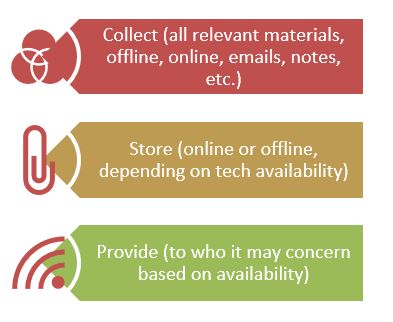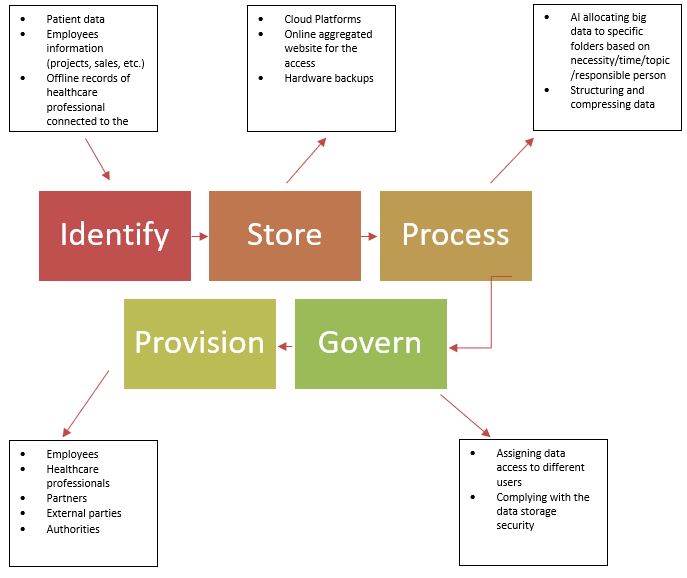
According to predictions, organizations and people will increase the world’s data to an unimaginable 44 zettabytes soon. Furthermore, 80% of this data will be unstructured, while around 60% will be copies of the original information (Mohamed, 2017). Before introducing changes at Siemens Healthineers looked diverse, unstructured, and hardly could be measured because of its volume and variety, coming from offline records, computers, employees’ notes, and so on. Besides, as the storage is not organized clearly, not all responsible representatives could get the data or access to it as it was not summarized and connected. At the same time, other paper-based notes could be lost and never found. Thus, the situation can affect the availability of data for professionals that should create meaningful decisions.

The second image depicts the data management strategy that Siemens Healthineers can adopt to handle the vast amounts of data to process. The company announced that it would be using Cloud Platform, a proprietary application for medical data storage and analysis; this system can be implemented in the data management strategy proposed above based on analytical insights (“Innovating digital technologies,” 2020). According to the new solution, the company should separate the flows of information and rely on online software to handle the big data, such as cloud, AI that processes and aggregates data, simulation technologies that provide data, security services for the cloud, and other related features (Protiviti, n.d.). All the undertaken measures will help the organization to process the data in a structured and effective way.
References
Innovating digital technologies. (2020). Siemens Healthineers. Web.
Mohamed, A. (2017). Digital transformation makes data management top priority. CIO.
Protiviti. (n.d.). The digital wave – how it impacts data management. Web.